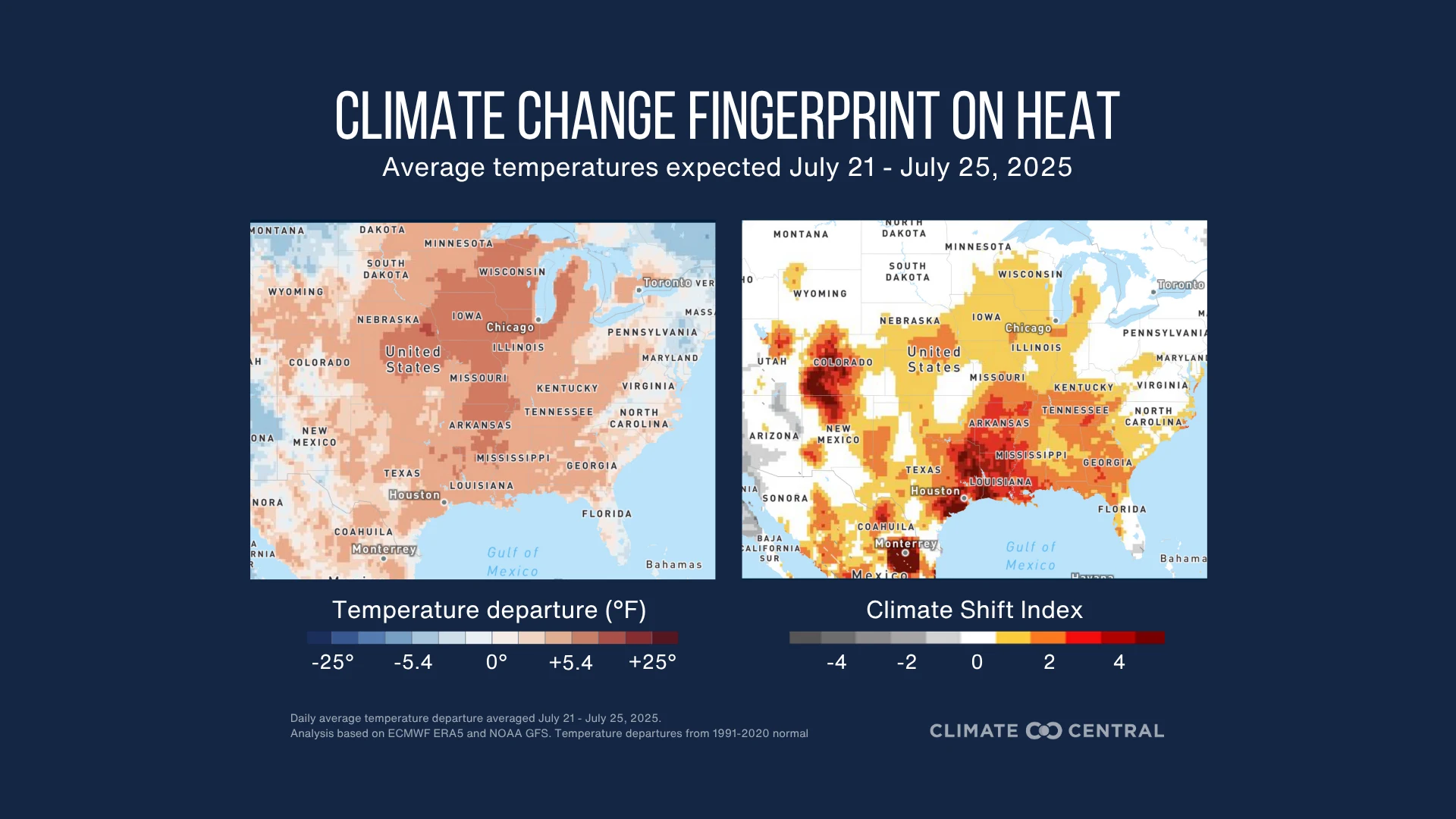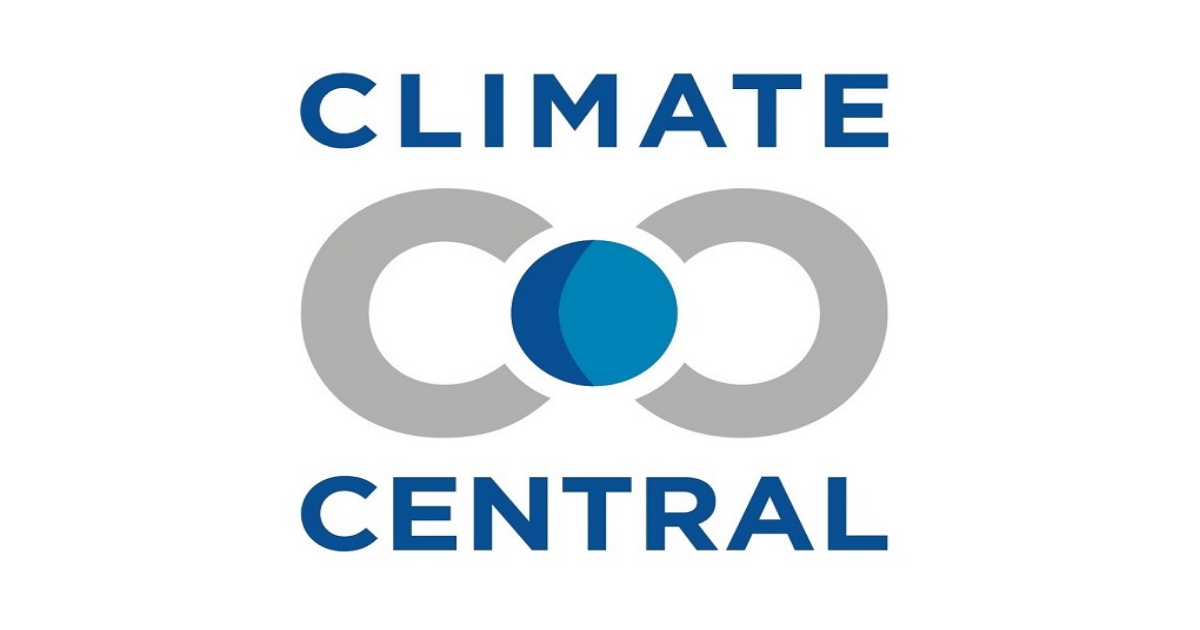Climate Shift Index Alert•July 21, 2025
July 21, 2025
A prolonged stretch of unusually hot, midsummer heat and humidity will grip a large portion of the United States from July 21 to 25. What began across the Southeast over the weekend is forecast to expand into the mid-South early in the week, then expand into the Midwest by mid-to-late week.
A Climate Central analysis finds that human-caused climate change made this excessive heat at least three times more likely for nearly 160 million people, nearly half of the U.S. population.
Note: This event may continue beyond July 25. Use the Global Climate Shift Index map to stay updated on heat in your region.

How unusual is the forecasted heat?
- Triple-digit highs are forecast for multiple days in parts of Arkansas, Kansas, Missouri, northern Louisiana, Oklahoma, and Texas.
- Forecast highs in the mid-to-upper 90s spread into the lower Midwest by midweek, with similar temperatures possible in the Northeast by late week.
- High humidity will intensify the heat, especially in the Central Plains, Midwest, and Mississippi and Ohio valleys, where heat index values could reach between 105°F to 110°F.
- Unusually warm overnight lows in the mid-70s to low 80s — as much as 5°F to 15°F above average for this time of the year — are forecast to potentially break record high minimums (the warmest low temperatures on record) in states like Alabama, Arkansas, Florida, Georgia, Kentucky, Louisiana, Missouri, South Carolina, and Tennessee.
- A strong area of high pressure, known as a heat dome, will anchor this weather pattern, funneling hot, humid air north and northeast throughout the week.
How has climate change influenced this heat?
- Climate Shift Index (CSI) levels of 5 — the highest possible — are forecast across wide swaths of the country, from Salt Lake City and Santa Fe to Tallahassee and Montgomery, meaning human-caused climate change made this extreme heat at least five times more likely. This signals an exceptional climate-influenced event.
- Over the full period, nearly 160 million people across the interior United States — nearly half of the population — will experience at least one day with a CSI of 3 or higher, indicating a strong influence from climate change.
What do experts say?
Dr. Kristina Dahl, VP of Science at Climate Central, said:
“This is not your grandmother’s heat wave. Yes, July is usually a hot month, but climate change is making this heat wave significantly hotter — and therefore more dangerous — than heat waves of the past.”
To request an interview with a Climate Central scientist, please contact Abbie Veitch at [email protected].
How do we know climate change is influencing this heat?
The Climate Shift Index uses peer-reviewed methodology and real-time data to estimate how climate change has increased the likelihood of a particular daily temperature.
Reporting resources
- For quick facts about extreme heat in the U.S. → Extreme Heat Toolkit
- For accessing this data in MAX or Baron Weather Systems → Climate Shift Index in KML
- For an in-depth guide about how to report on attribution science and extreme weather types → World Weather Attribution’s reporting guide
- For the latest research-backed messaging to use while reporting on climate change → Potential Energy’s Guide to Reporting on Unnatural Disasters
